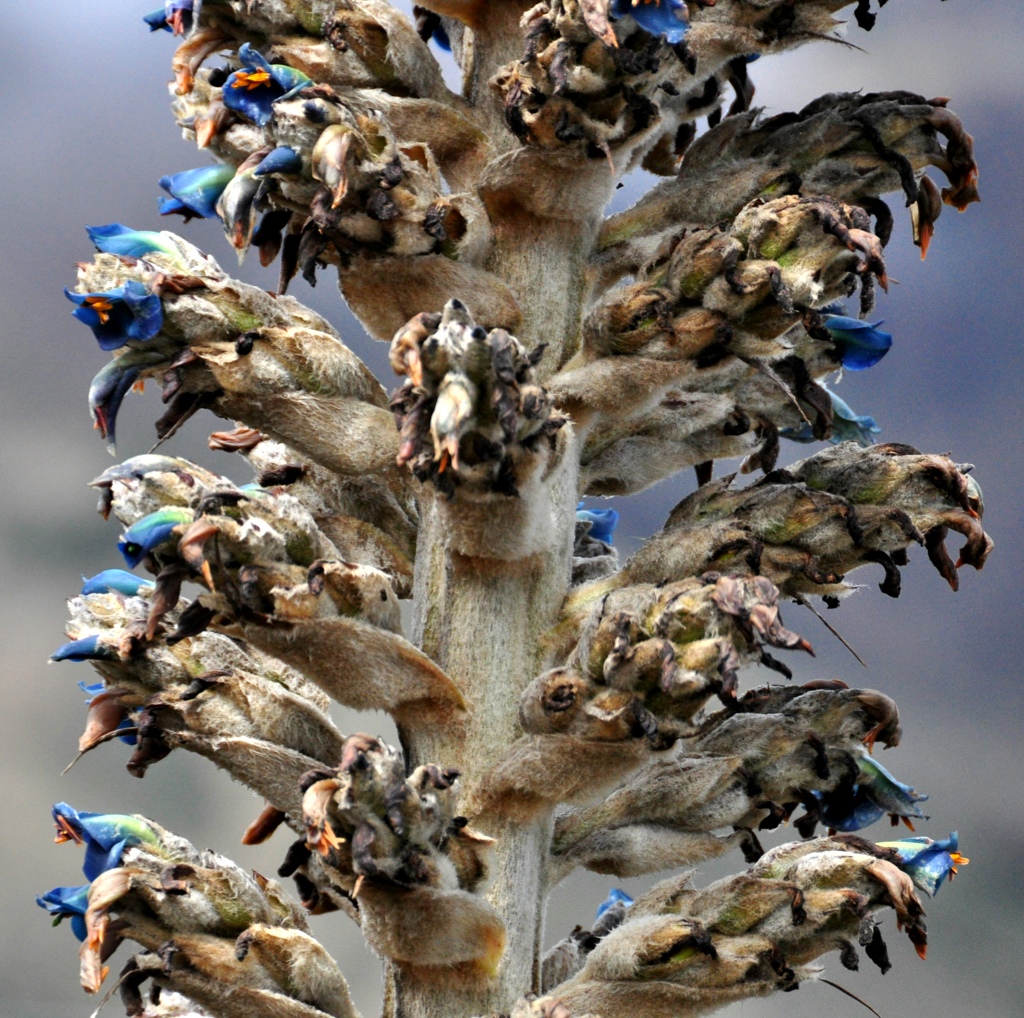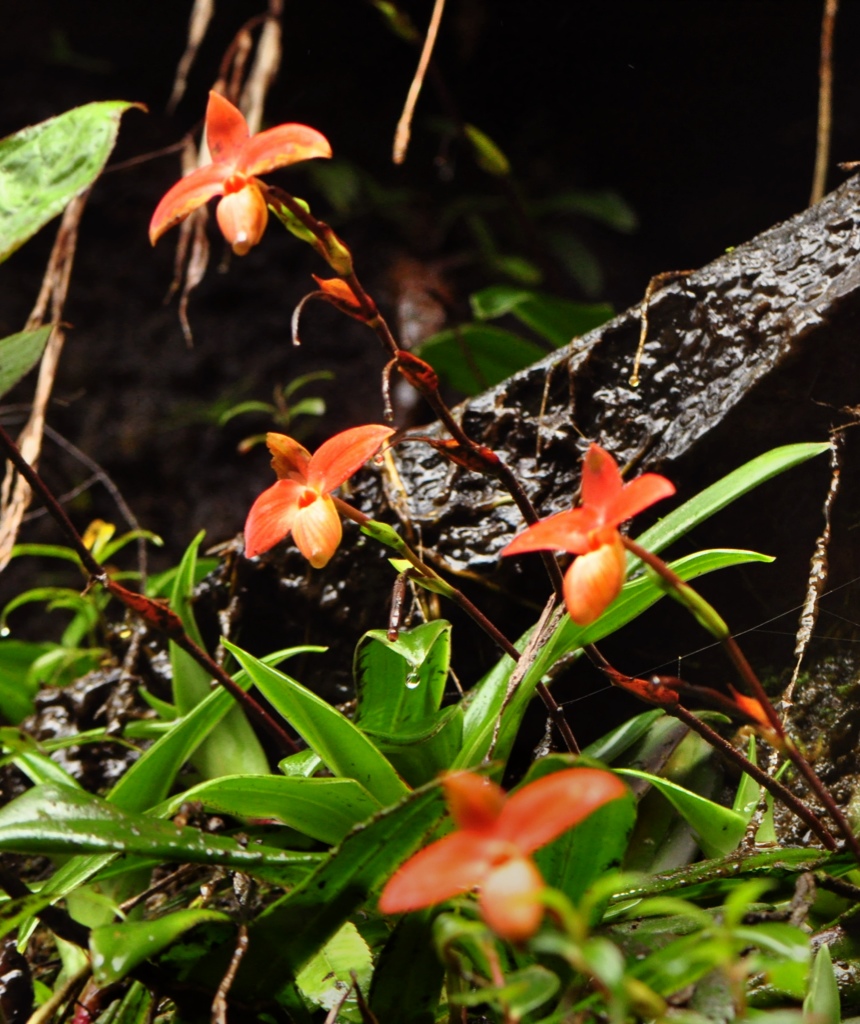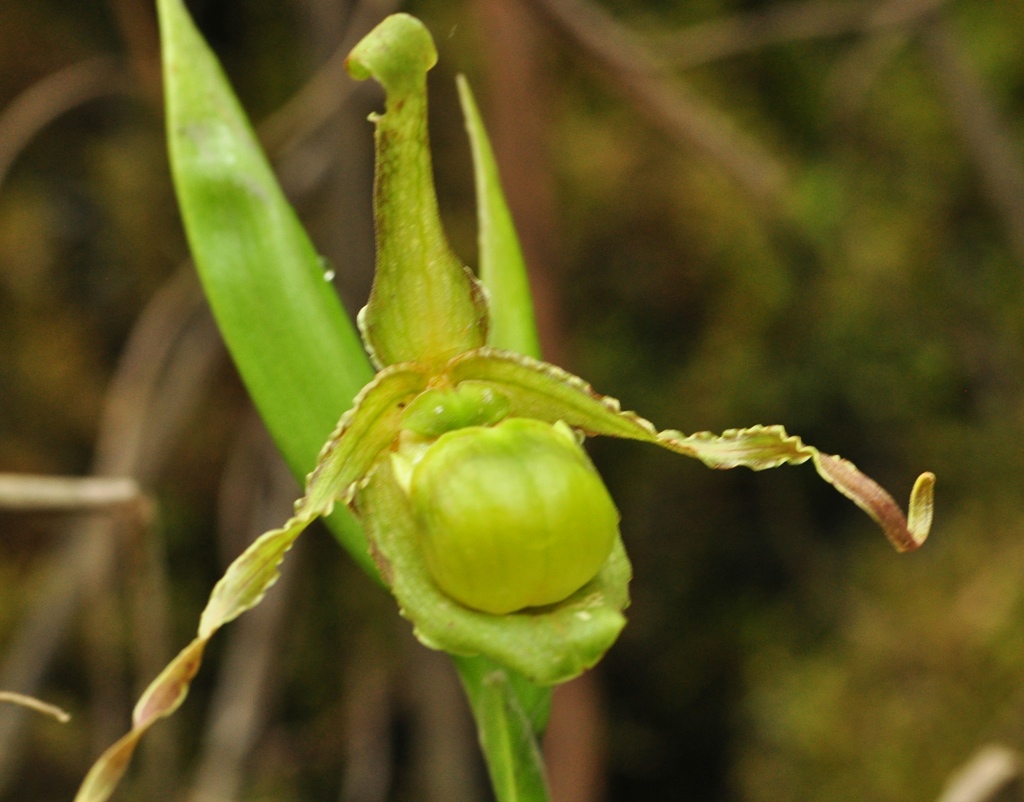Orchid Hunting in the Andes


Crossing the Andes, we find Puya clava-herculis in bloom at the highest elevations, their aquamarine flowers the same color as those of the jade vine. Now the hunt to find and photograph orchids becomes the obsession of the day — but Marie and Steve Nock, who are our travel companions, are searching for aroids as well.
 |
| Puya clava-herculis |
Sobralia rosea lifts large lavender and rose flowers everywhere we look. A terrestrial Habenaria species shows off little white flowers surrounding an upright stalk, growing from the roadside. Rodriguezia chisei is so perfectly placed in a small tree that it could have come straight from an orchid show.
 |
|
Mossy wet habitat of Phragmipedium besseae |
Marie and Steve are not disappointed, either. A thunderous waterfall has Anthurium effusilobium waggling in the mist to one side while Philodendron acutifolia sways among grassy bamboos.
But the pot of gold at the end of our orchid rainbow is Phragmipedium besseae, discovered in Peru by Sarasota’s Libby Besse and so named in her honor. It is velvety orange with yellow surrounding it small pointed pouch. The discovery enthralled the orchid world and revived great interest in slipper orchids.
 |
| Phragmipedium besseae |
Ivan spots a glint of orange some 20 feet up a slippery hillside. Getting to a place to more clearly see and photograph it means grasping slender trees and bamboos, finding footing in tree roots slick with wet moss and inevitably doing a little hands-and-knees crawl. She grows at an elevation of 3,000 feet on the sides of rocks that are constantly wet and sprayed by slender waterfalls. One group of four together is the photo prize of the expedition.
A little farther on, we find Phragmipedium besseae growing among Phragmipedium reticulatum, a larger and very beautiful slipper that is green and yellow. Ivan believes that the two will naturally hybridized one day.
 |
| Phragmepidium reticulatum |
Descending even more we visit a village of Shaur people, whose ancestors once believed shrunken heads could help women successfully through labor. An Italian missionary, Father Andreetta, came from Italy and established a free school for them and began to study and collect orchids. Ivan and his brother Pepe learned to cultivate orchids from him when they lived nearby.
